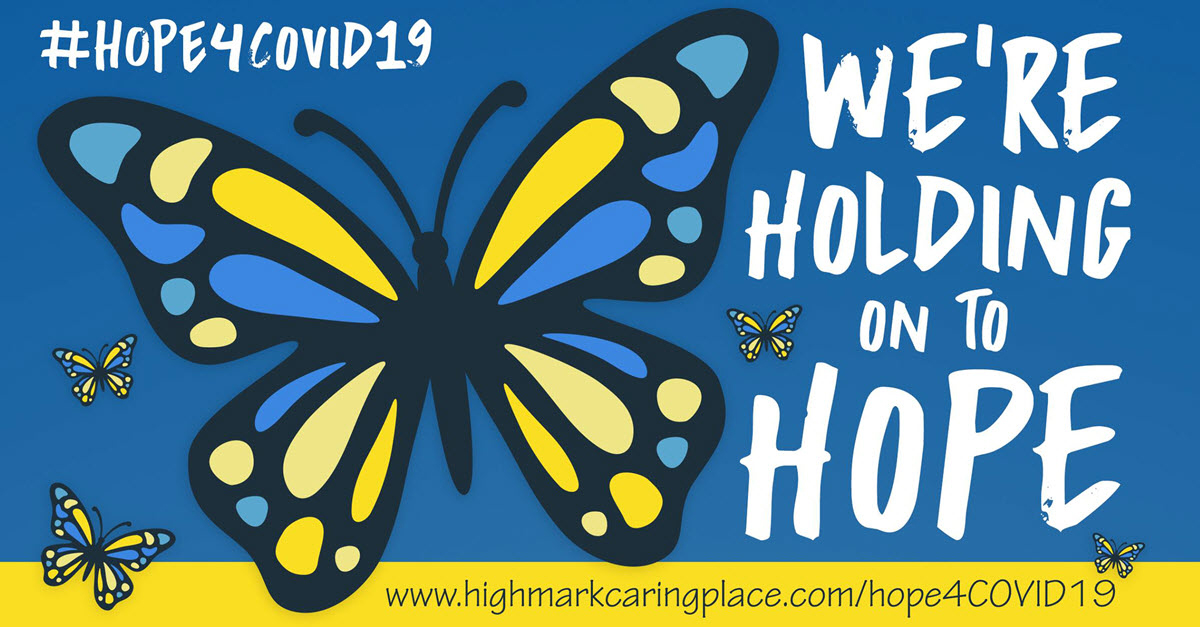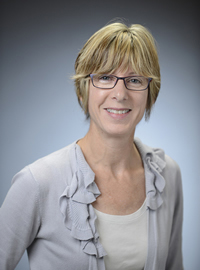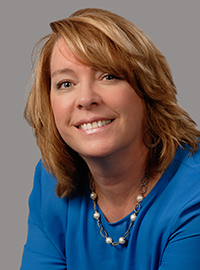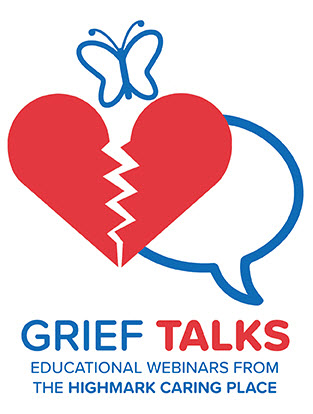
The pandemic has changed many areas of life as we know it — from school to work to childcare and everything in between. Many of these changes come up in our conversations, but something that isn’t talked about enough is how the pandemic has impacted people who are grieving the loss of a loved one.
To learn more, we sat down with Andrea Lurier and Terri Bowling, program managers at the Highmark Caring Place, A Center for Grieving Children, Adolescents and Their Families. Since 1996, the Caring Place has offered help and hope to children and families grieving the loss of a loved one through its support group services and programs. When COVID-19 made it impossible to provide those services in person, they quickly launched virtual programming and other innovative ways to bring together the people they serve to share their feelings, fears, and frustrations, and to support each other through the grieving process.

Andrea Lurier, program manager and child grief specialist at the Highmark Caring Place
Catherine Clements: How has social isolation due to the pandemic exacerbated grief?
Andrea Lurier: The pandemic has affected people in so many ways related to loss and grief. You almost have to slow down and untangle the many layers to truly appreciate the impact.
For families who lost a loved one during COVID-19, being socially isolated affected every single part of the dying and grieving process.
We’ve talked to families where loved ones contracted and died from COVID-19. We’ve had other family members call us where their person had an underlying medical condition but was reluctant to “break isolation” to seek care during the pandemic, and then their health became poor, and they died. Either way, there’s this feeling that the pandemic played a role in the death, and therefore in the grief.
No matter what the cause of death was, pandemic restrictions meant not being able to be with your loved one when they were ill, and not being able to hold their hand and be present when they died. These experiences complicate grief. That becomes part of your story. You might think, “I wasn’t there,” or “I wasn’t able to say what I needed to say,” or “I didn’t get to have those last moments.”
You know, grieving families, kids especially, already feel different and alone, and often don’t know anyone else going through what they’re going through. The isolation of the pandemic added to that isolation they were already experiencing.
Terri Bowling: Another example is funerals and gatherings that people would normally have after someone died. There were restrictions where you could only have 10 people if you were allowed anything. So, think about a family that has 50 people they want to invite — now, on top of grieving, they have to make the determination who’s important enough to be in that space. That’s exacerbating the grief response, because of all the emotion that comes along with that.
Catherine Clements: Funerals are often an important step in the grieving process, and the restrictions on social gatherings created immense challenges. What alternatives have you seen families and funeral directors adopt?
Terri Bowling: We do a lot of work with funeral directors, and I will give them a huge shout-out, because they had to get very creative in the ways that they took care of their families, not just from a physical sense, but employing new and creative methods to help people feel connected. I know funeral directors early on who decided to use drones so they could basically broadcast a grave-side ceremony that people could access virtually.
Andrea Lurier: We don’t realize how important funerals are until we don’t have them. As grief experts, it’s clear to us how important funerals are to socially support us in our most vulnerable moments — we need something with gravity, with importance, to honor our person’s life. Having to be isolated, and not being able to bring people together meant that we didn’t get that at those beginning moments of our grief.
We wrote an article on funeral alternatives to help families grieve when in-person gatherings are not possible. There are ways of gathering the support you normally get from a funeral, like having people on Zoom and sharing stories or sharing pictures. Even knowing that we visited the grave site, and then maybe a week later someone else visited the site, there’s still that sense of connectedness. People found meaningful ways to remember, connect and give and receive support — simple things like neighbors leaving food at the door, and how important handwritten cards became.
But I also think some families felt like, “what’s the point, it’s just too hard.” I really hope that, when they feel safe and comfortable, they still do something to honor their person. It’s never too late to do that.

Terri Bowling, program manager and child grief specialist at the Highmark Caring Place
Catherine Clements: It’s safe to say the pandemic has increased many people’s anxiety, but how has COVID-19 affected the children and teens you work with at The Caring Place?
Terri Bowling: I think out of my younger people, there wasn’t one that didn’t have an accelerated or higher level of anxiety due to COVID. We’re talking six-year-olds, young kids, that are walking around worried about what’s happening in the world. If you had one parent die, and you’re hearing all the news and conversation about COVID, any time the other parent gets the sniffles or sneezes, that’s very anxiety-provoking and fearful.
Another example I’ve seen is teens saying, “I don’t want to go outside of my house.” It’s terrible for a developing teen to have that level of fear where they feel they can’t even go to the grocery store with a parent or caregiver.
Andrea Lurier: To add to that, kids are also afraid about getting sick. They feel like, “my family couldn’t manage another loss, I can’t imagine doing this to my adult, so I need to stay well.” And the adults, conversely, think, “I’m all they have, I can’t take a risk.” We are all afraid of getting sick, but there’s this added responsibility from grieving kids and families that they can’t burden one another. The responsibility they feel for that is really striking.
Catherine Clements: How can caregivers help to manage this anxiety for children and teens?
Terri Bowling: A main focus is providing safety and the reassurance of routines. Open communication is always our go-to plan, with consistency in communications, and making sure they have boundaries set. That can get hard in a pandemic home situation where everyone is in everyone’s space and you don’t have a lot of other options. I really applaud families for powering through and staying as safe and healthy as they can be.

The “Grief Talks” webinar series is one of the many ways that Andrea, Terri and other Caring Place experts share insights and support. Available episodes can be found under the “Events” tab at highmarkcaringplace.com.
Catherine Clements: With the pandemic at the forefront, non-COVID-19 deaths and grief can be unintentionally marginalized. Is this something you’ve witnessed?
Terri Bowling: Some families have reported that feeling. In a way, this is not new to us. The Caring Place serves everyone, so we regularly have conversations about marginalized types of death, like suicide, HIV/AIDS, and other stigmatized types of death. But every death is important, every connection is important — you lost someone you love, and how they died doesn’t have any bearing necessarily on the feeling of loss. It’s part of your story, and our goal for everyone is normalizing that it’s your emotion, it’s your loved one who died, and it’s okay to feel what you feel.
Andrea Lurier: As a society, we do have a way of categorizing and putting more value on some losses than others. You know, people might assume that having a parent die might be harder for a child than a grandparent dying, but when you talk to the individual child and hear their story, you might find that their grandpa was their primary caregiver.
I think what we do well, to take a little bit from what Terri was saying, is always ask the person their story and honor their story, and it shouldn’t be compared with another story — it’s important because it’s your story. That’s the atmosphere we try to engender at the Caring Place, and then the families do it for each other, especially the kids, because they are just really curious about each other. They’re curious about each other’s stories without comparing — they’re very kind that way.